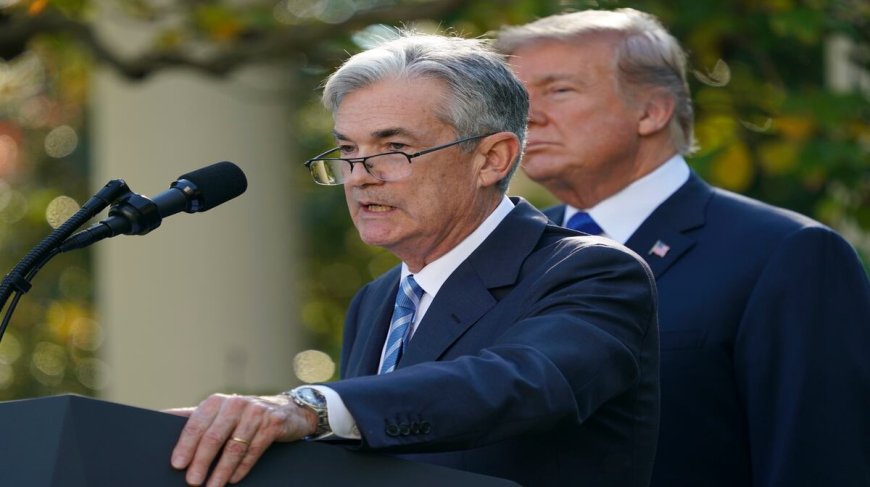Fed Chair Contenders: How New Leadership Could Reshape America’s Economic Future
An in-depth analysis of potential Federal Reserve Chair candidates, including Sumerlin and Brainard, with modeled outcomes for growth, inflation, and markets.

The race for the next Federal Reserve Chair has taken center stage in Washington, with markets bracing for what potential leadership changes could mean for interest rates, inflation, and long-term growth. Among the names floated, former Bush economic adviser Phil Sumerlin, seasoned Fed veteran Lael Brainard, and current governors with policy track records are under the spotlight.
This moment is crucial: the U.S. economy is navigating cooling inflation, a tight labor market, and the lingering impact of trade disruptions under President Trump’s tariff policies. Investors and small businesses alike want to know — how would new leadership at the Fed steer America’s monetary future?
A Critical Juncture for the Fed
The Federal Reserve is tasked with balancing growth and inflation. With wholesale prices climbing 0.9% in July and energy costs spiking, the next Fed chair could define the trajectory of U.S. monetary policy for the next decade. A shift in leadership could also influence global markets, especially as central banks in Europe and Asia are recalibrating after years of tightening.
Unlike previous transitions, this decision carries an added weight: it coincides with renewed political pressure on the Fed to support growth while maintaining credibility on inflation control.
Candidate Profiles
Phil Sumerlin: Market-Friendly but Cautious
Sumerlin, known for his pragmatic stance during the Bush era, has emphasized measured rate cuts to stabilize growth during downturns. Analysts believe he would lean toward easing borrowing conditions for businesses if growth slows, while still guarding against runaway inflation.
His policies, modeled on prior decisions, suggest:
-
Baseline growth projection: 2.1% GDP expansion by 2026.
-
Rate path: Gradual cuts totaling 75 basis points over two years.
-
Market impact: Boost in manufacturing investment due to cheaper credit.
Lael Brainard: Steady Hand with Progressive Leanings
Brainard, who has decades of Fed experience, could prioritize stability and global coordination. Her approach to climate risk in finance and digital currency oversight adds new layers to traditional Fed concerns.
Modeled outcomes under her leadership suggest:
-
Inflation control focus, holding rates steady longer.
-
Slower but sustainable growth of 1.8% GDP.
-
Stronger regulatory framework on banking resilience.
Wildcard Candidates
Other contenders include Fed insiders who emphasize quantitative tightening and conservative lending frameworks. These approaches could tighten liquidity but reassure bond markets.
Hypothetical Economic Models: How Policy Could Play Out
Using past policy patterns, hypothetical models show different trajectories for the U.S. economy under each candidate:
| Candidate | Inflation by 2026 | GDP Growth by 2026 | Rate Policy | Impact on Dollar |
|---|---|---|---|---|
| Sumerlin | 2.7% | 2.1% | Gradual cuts | Weaker short-term, rebound mid-term |
| Brainard | 2.3% | 1.8% | Hold steady | Stronger dollar, stable bonds |
| Conservative pick | 2.0% | 1.5% | Aggressive tightening | Strong dollar, slower growth |
Investor Implications
For Wall Street, Fed leadership isn’t just academic. A chair who leans dovish, like Sumerlin, could ignite equity rallies, particularly in manufacturing and real estate. Conversely, a hawkish or conservative pick would stabilize the bond market but risk slower small-business growth.
Small businesses, already squeezed by higher wholesale costs, could benefit from a rate-cutting environment. But those reliant on credit lines must prepare for continued volatility. Budget templates and financial planning strategies are now more critical than ever.
Global Context: Lessons from Abroad
Global central banks, including the European Central Bank and Bank of Japan, are shifting toward easing to counter slowing growth. The U.S. Fed’s move will not only determine domestic stability but could reset currency flows worldwide.
The stakes are enormous. As one investment strategist noted in a Brookings Institution analysis, Fed policy leadership shapes not just markets but geopolitical leverage.
Voices from the Industry
CEOs in the industrial sector have begun quietly advocating for a Fed leader who understands supply chain reconfiguration amid tariffs. As one executive told the Wall Street Journal, “Reshoring is only viable if credit remains accessible — the Fed’s next chair will either accelerate or stall that process.”
Similarly, a Council on Foreign Relations report highlights the importance of aligning monetary leadership with geopolitical realities, warning that isolationist stances could harm U.S. competitiveness.
Looking Ahead: The Chair That Will Define a Decade
The choice of Fed chair isn’t just about technical policy; it’s about trust, credibility, and the ability to balance competing pressures in an increasingly volatile global economy.
For now, investors, businesses, and households await clarity. Whether the Fed leans dovish, hawkish, or somewhere in between, the effects will ripple far beyond Washington — shaping jobs, mortgages, investments, and America’s global standing.











